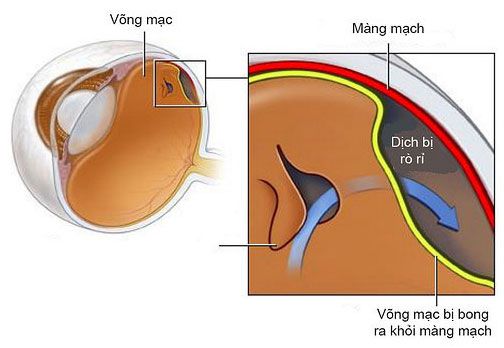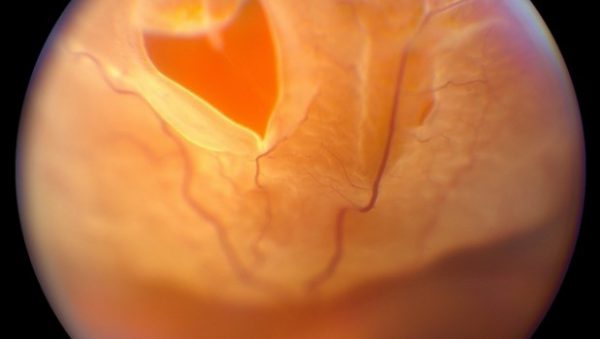1. What is retina?
The retina is the innermost layer of the eye that acts like the film in a camera.

Light waves affect the eye and then focus on the retina to stimulate the nerve fiber layer to work and then send information to the brain that will determine what we see.
2. What is retinal detachment?
Conditional retinal detachment is when the retina separates from the stroma and thus loses its function.
There are 3 types of retinal detachment:
2.1 Retinal detachment with laceration
Occurs secondary to infiltration of fluid below the retinal layer. Retina separates from the stroma.

2.2 exudative retinal detachment
Occurs secondary to inflammation or due to wound accumulation of fluid under the buffer
2.3 Traction retinal detachment
Occurs when the scar pulls the retina away from the underlying tissue
3. Causes of retinal detachment with holes
Occurs with the rate of 1/10000 of the population and in middle age. More common with people with myopia and higher risk with people with higher levels of myopia.
Retinal detachment can also occur after eye surgery, most commonly with an incidence of 0.3%
Trauma is another cause for retinal detachment.
4. Symptoms of retinal detachment
Retinal detachment usually begins with posterior vitreous detachment (PVD). Symptoms associated with posterior vitreous detachment include sudden onset and flash of light. However, in a small group, posterior vitreous detachment can cause retinal tear, which can progress to retinal detachment.
5. Diagnosing retinal detachment
An ophthalmologist can diagnose by ophthalmoscopy when the pupils are dilated
6. Is treatment really necessary?
A blepharoplasty is an ophthalmic emergency and surgery is necessary to prevent permanent vision loss.
The goal of treatment is to close the retina with laser or cryotherapy (freezing method), removing fluid under the retina to flatten it and support the retina.

7. Opinion on treatment of retinal detachment
7.1 Laser can be used to treat retinal detachment and prevent progression of retinal detachment. This is usually chosen if the retinal detachment is small and local, and if the macula is not involved.
7.2 Inflating and ballooning is a technique in which an air bubble is injected into the eye. The bubble is a force against the detached retina, pushing it flat against the inner wall of the eye. This is appropriate in selected cases.
7.3 Scleroplasty is a surgery that uses a silicone belt/filler to squeeze the sclera from the outside to help the retina press against the sclera easily. This surgery is usually accompanied by intraocular gas injection to combine retinal compression from the inside and scleral freezing.










































